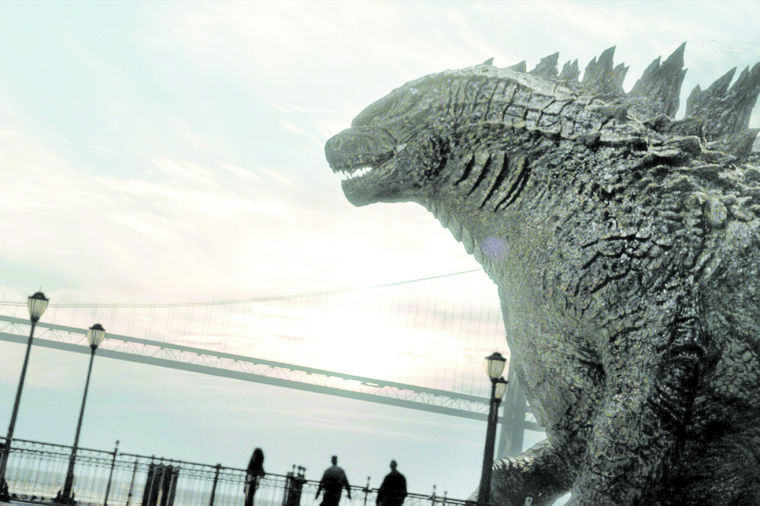Godzilla reboot pays tribute to original
May 21, 2014
Roland Emmerich’s 1998 blasphemous Godzilla adaption can finally be forgotten. Last Thursday’s release of the Gareth Edwards reboot marks the best appearance of the gargantuan reptile since the original 1954 horror classic.
While online reviews show mixed feelings regarding plot development and monster screen time, it is generally agreed that “Godzilla” is the most soft-spoken yet terrifying disaster film of the last two decades. The film not only delivers genuine fear and an unusual sense of humanity but also pays incredible respect to the monster’s creator, Tanaka Tomoyuki.
As the opening credits roll, the advent of nuclear weaponry unfolds before the audience, revealing a series of unexplained anomalies that lay the groundwork for dramatic substance. A nuclear engineer, played by Bryan Cranston of Breaking Bad, loses his wife to an unearthly pair of tremors shortly thereafter and begins working to solve the mystery.
Once that’s done, all hell breaks loose as a pair of King Kong-sized bat creatures embark on a city-destroying quest across the globe.
The constant tease of Godzilla’s hulking mass, the estrangement of the human leads, and the increasing destruction of Earth’s terrain leave the audience permanently worried. It’s a subtle fear that churns in the pit of your stomach and does more damage than a short-lived scream or heart murmur.
Humanity feeding off of fear is an important theme throughout the film. Mankind is being punished for its sins. The film also deals with the threat of nuclear power, which kills the human protagonist’s wife, awakens the bat creatures and Godzilla himself, and is clearly bad news.
The original 1954 production was created in the wake of World War II and the real-world advent of nuclear weaponry. As The Guardian has recently reported, Tomoyuki made Godzilla in opposition to that power.
“The theme of the film from the beginning was the terror of the bomb,” he said, referring to the fear that gripped Japan when the original film hit theaters.
Edwards’ vision captures that theme and then some. Having already established such immense fear, he introduces the aesthetically revamped monster, which has been scaled up so that it creeps slightly over the tops of modern skyscrapers.
Godzilla is kept hidden during most of the film and becomes completely visible only at the climax. Until then his form is typically obscured by the plumes of smoke that rise from the enemies he destroys. At other times he wreaks necessary havoc through the eyes of camera crews or bystanders.
Some of the most engaging sequences are witnessed via CNN; these include scenes of children stranded on a school bus and soldiers scrambling for their lives.
The film delivers a balanced cinematic meal for audiences to consume. It not only sets the bar painstakingly high for future Godzilla renditions but also sends a beacon of hope for this summer’s inevitable hard-to-swallow blockbusters.





















